Pololu Isolated Solid State Relay/Switch, SPST, 30V, 11A
In stock, ships same business day if ordered before 2PM
Delivered by Tue, 16th of Dec
Quantity Discounts:
- 10+ $7.33 (exc GST)
- 25+ $7.10 (exc GST)
 |
Pololu Isolated Solid State Relay/Switch, SPST, bottom view with dimensions. |
|---|
This board functions as a solid state, single-pole, single-throw (SPST) relay or switch that can be activated by a low-current control signal between 2.7 V and 40 V. The switching is performed by a pair of MOSFETs controlled by an optically isolated driver that galvanically isolates the load from the control inputs. The MOSFETs are arranged back-to-back to make the two outputs symmetric and equivalent, allowing bidirectional current control with the switch in any orientation relative to the load (for example, this board can be used for high-side or low-side switching). The board can be used as a replacement for a mechanical relay in many situations, and its solid-state design makes it immune to problems like contact wear and arcing that limit the service life of mechanical relays. It also offers silent operation and a smaller form factor (0.8" × 0.32" × 0.13") than a typical mechanical relay with a comparable current rating. These devices can also be used for isolating logic signals, but note that the turn-on and turn-off times on the order of 1 ms make them unsuitable for signaling rates beyond a few hundred per second.
Two versions of the solid state relay/switch are available with different voltage and current capabilities:
- Pololu Isolated Solid State Relay/Switch, SPST, 30V, 11A
- Pololu Isolated Solid State Relay/Switch, SPST, 60V, 7A
Details for item #5421
 |
Pololu Isolated Solid State Relay/Switch, SPST, 30V, 11A. |
|---|
This version of the solid state relay/switch board can switch outputs with up to 11 A of current at voltages up to 30 V (absolute maximum). The switch has a maximum turn-on time of 1.5 ms and turn-off time of 1 ms, and its output MOSFETs have a typical combined resistance of 10 mO when the relay is enabled.
Using the solid state relay/switch
 |
The load connection points are accessible on one side of the board while the control pins are routed to the other. The control circuit is powered by supplying 2.7 V to 40 V across the VIN and GND pins, and it is activated by a high (2.7 V to 40 V) control signal on the EN pin, which turns on the output MOSFETs. The EN signal turns on the output switch via an LED driver and an optocoupler (or opto-isolator) that provides the board’s electrical isolation. The output switch is made from a pair of back-to-back MOSFETs, so it is symmetric and bidirectional, and this board can be used as a high-side switch or low-side switch.
The board’s control circuit will typically draw up to 10 mA from VIN when EN is high (slightly less at voltages below 20 V). If your EN signal source can provide at least 10 mA, you can tie EN and VIN together—for example, by soldering a short piece of wire between the through-holes—to power and activate the control circuit with a single connection (since the board does not require VIN to be present when EN is low).
 |
Three-wire and two-wire (with EN and VIN tied together) control options for the Pololu Isolated Solid State Relay/Switch, SPST. |
|---|
Making connections to the board
The EN, VIN, and GND pins work with 0.1"-pitch header pins and are compatible with standard solderless breadboards
You can connect the board’s output terminals to your circuit in a variety of ways. For typical high-current applications, you can solder wires directly to the 0.045"×0.095" slots. The slots can also accommodate 3.5mm-pitch and 5mm-pitch terminal blocks as shown below:
|
|
The current path slots can also accommodate a 1×2 0.2"-pitch header or a 1×3 0.1"-pitch male header with the middle pin removed (as shown in the pictures below).
|
|
Real-world power dissipation considerations
In Pololu's tests, Pololu found that the 30 V version of the relay/switch could conduct about 11 A continuously, and the 60 V version could conduct about 7 A continuously, without reaching the thermal limit for the MOSFETs. Pololu's tests were conducted at approximately 25°C ambient temperature with no forced air flow.
The actual current you can pass through the board will depend on how well you can keep it cool. The printed circuit board is designed to help with this by drawing heat out of the MOSFETs. Solid connections to the output pins (such as with thick soldered wires) can also help reduce heat build-up in the MOSFETs and board.
Warning: Exceeding temperature or current limits can cause permanent damage to the MOSFETs. If you are switching an average continuous current greater than about 2/3 of the specified maximum, Pololu strongly recommend that you monitor the MOSFETs’ temperature and look into additional cooling if necessary.
This product can get hot enough to burn you long before the chip overheats. Take care when handling this product and other components connected to it.
Creepage and high voltage considerations
This product is not designed to or certified for any particular high-voltage safety standard. The PCB traces are laid out to provide at least 4.8 mm of creepage between the control side and the load side. A rough rule of thumb is that uncontaminated FR4 PCBs should have approximately 1 mm of creepage per 100 VRMS of isolation. Note that this guideline implies a maximum safe voltage lower than the maximum isolation voltage rating of 3.75 kVRMS for the TLP3906 optocoupler used on this board.
Warning: This product is generally intended for use below 30 V, and many of the application example pictures (e.g. use on a breadboard) are appropriate for such lower-voltage applications. These boards can be used at higher voltages, but working with higher voltages can be extremely dangerous and should only be attempted by qualified individuals with appropriate equipment and experience.
Schematic and dimension diagrams
 |
Schematic diagram for the Pololu Isolated Solid State Relay/Switch, SPST. |
|---|
The dimension diagram is available as a downloadable PDF (268k pdf).
Dimensions
| Size: | 0.8" × 0.32" × 0.13" |
|---|---|
| Weight: | 0.4 g |
General specifications
| Minimum control voltage: | 2.7 V |
|---|---|
| Maximum control voltage: | 40 V |
| Maximum input current: | 10 mA1 |
| Maximum load voltage: | 30 V |
| Maximum load current: | 11 A |
| Maximum on resistance: | 10 mO |
| Maximum turn-on time: | 1.5 ms |
| Maximum turn-off time: | 1 ms |
Identifying markings
| PCB dev codes: | iso01a |
|---|---|
| Other PCB markings: | 0J15480 |
Notes:
- 1
- On VIN when EN is high (i.e. when switch is enabled).
File downloads
Dimension diagram of the Pololu Isolated Solid State Relay/Switch, SPST (268k pdf)
3D model of the Pololu Isolated Solid State Relay/Switch, SPST (3MB step)
Drill guide for the Pololu Isolated Solid State Relay/Switch, SPST (40k dxf)
This DXF drawing shows the locations of all of the board’s holes.
Exact shipping can be calculated on the view cart page (no login required).
Products that weigh more than 0.5 KG may cost more than what's shown (for example, test equipment, machines, >500mL liquids, etc).
We deliver Australia-wide with these options (depends on the final destination - you can get a quote on the view cart page):
- $3+ for Stamped Mail (typically 10+ business days, not tracked, only available on selected small items)
- $7+ for Standard Post (typically 6+ business days, tracked)
- $11+ for Express Post (typically 2+ business days, tracked)
- Pickup - Free! Only available to customers who live in the Newcastle region (must order online and only pickup after we email to notify you the order is ready). Orders placed after 2PM may not be ready until the following business day.
Non-metro addresses in WA, NT, SA & TAS can take 2+ days in addition to the above information.
Some batteries (such as LiPo) can't be shipped by Air. During checkout, Express Post and International Methods will not be an option if you have that type of battery in your shopping cart.
International Orders - the following rates are for New Zealand and will vary for other countries:
- $12+ for Pack and Track (3+ days, tracked)
- $16+ for Express International (2-5 days, tracked)
If you order lots of gear, the postage amount will increase based on the weight of your order.
Our physical address (here's a PDF which includes other key business details):
40 Aruma Place
Cardiff
NSW, 2285
Australia
Take a look at our customer service page if you have other questions such as "do we do purchase orders" (yes!) or "are prices GST inclusive" (yes they are!). We're here to help - get in touch with us to talk shop.
Have a product question? We're here to help!
Videos
View AllGuides
MOSFETs for Makers: Getting Started with High-Power Control
Getting Started With Relays | Examples with Raspberry Pi Pico
How to use a PiRelay HAT for Raspberry Pi - Multiple Relay Control with Voice or GUI
The Maker Revolution
Projects
Smart Home Makeover with HomeAssistant
PowerPlay SSR Control
Smart Watering System
Makers love reviews as much as you do, please follow this link to review the products you have purchased.










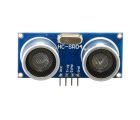





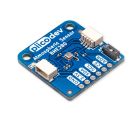

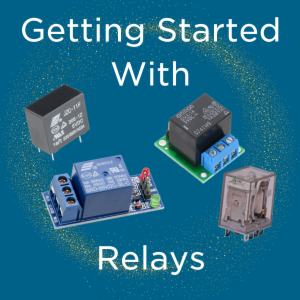


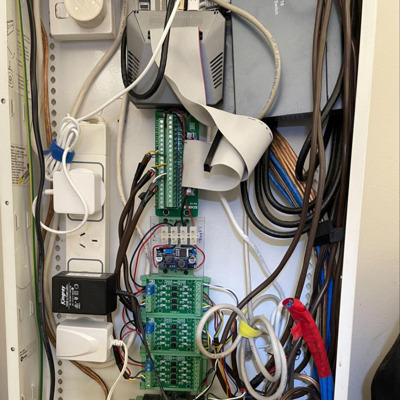
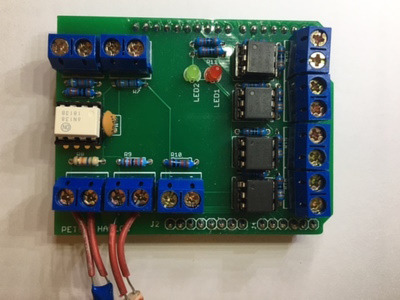


Product Comments